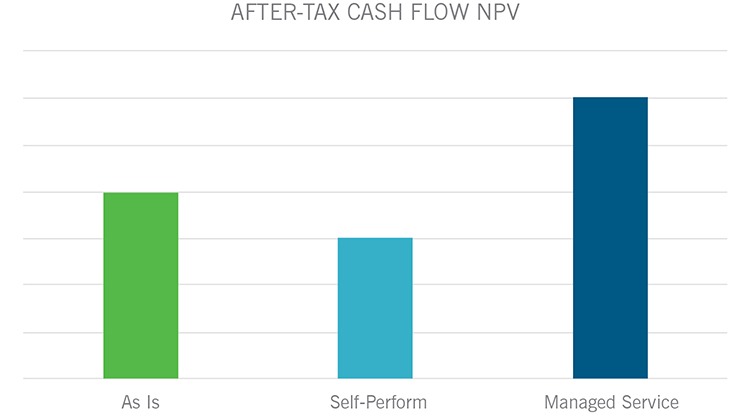Blog
Optimizing Total Value

The decision to repair or replace equipment and systems should be based on optimizing the total value of the equipment or system for the business over its remaining lifetime. There are many factors to take into consideration when deciding whether to repair or replace equipment, which we’ve broken down below.
Cost to repair
Cost per breakdown
- Direct cost of repair, including cost of removing the broken part, disposing of it, replacement part cost, and cost of installation and testing
- Cost of lost production, including lost profits from lost production, cost of scrap materials, impact of the repair on product quality and miscellaneous costs
- Collateral cost including environmental cleanup, occupational health and safety and legal costs
One-time cost
- Cost of inventorying spares related to the repair
Ongoing costs
- Impact of repair on product quality and production capacity, and maintenance costs over the remaining service life
Cost to replace
Disposal cost of retired equipment
- Decommissioning and disposal cost
- Salvage value
- Equipment depreciated value write-off cost (non-cash)
Cost of purchasing and installing a replacement unit
- Research time, capital equipment cost and spare parts inventory cost, cost of tying up working capital
- Installation cost including miscellaneous parts and supplies, inspection and certification costs
- Training and safety meetings prior to deployment
- Lost production during installation and commissioning
The replacement unit’s impact on production
- Product quality
- Equipment availability
- Production capacity
- Equipment operating costs
- Labor costs
Out-of-warranty costs
- Cost of repairs
- Lost production
- Collateral costs
- One-time costs
- Impact on product quality
- Impact on production capacity
This approach works well for looking at individual pieces of equipment but what if you need a major upgrade of multiple systems?
First determine what your objectives are that factor into the decision-making process.
Here are the typical objectives that we see:
- Update obsolete energy conversion system infrastructure to improve reliability and profitability
- Invest in core business and not utilities infrastructure systems
- Reduce energy carbon footprint and energy intensity
- Identify and rank alternatives by total NPV
Here is an example of a prototypical customer and the list of projects that they might want us to manage:
- Chilled water production and delivery to the manufacturing building
- Steam production and delivery to the manufacturing building
- Compressed air production and delivery to the manufacturing building
- Cooling towers and tower water delivery to the manufacturing building
- HVAC units
- New web-based monitoring and reporting system
- Interior and exterior lighting
- UPS and electrical infrastructure
Let NPV tell the story. Here is why a customer might choose to outsource their non-core utilities to Duke Energy One.

Here is the way we will approach your needs.

Here is what you can expect Duke Energy One will provide with our managed offer.
Construction Phase
- Fixed firm pricing for equipment/installation/commissioning
- Maintain an active presence during construction and commissioning
- Assume ownership shortly after construction
Operation and Maintenance of Systems
- Provide full-time ongoing operational personnel on site
- Provide planned maintenance services under coordination of our personnel
- Support monitoring and reporting system, and provide remote engineering as required
Ongoing Service Considerations
- Outage response periods to be agreed upon by system and issue type; three buckets proposed based on urgency of response
Let us show you our capabilities and talk about our process to see if we can create value for your company.



